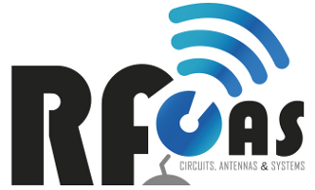| Abstract | Equivalent circuits of waveguide discontinuities and volumes were use in the past for the design of microwave devices, N Marcuvitz, "Waveguide Handbook". Nowadays, most of this waveguide structures can be analyzed and optimized using rigorous full-wave methods (either numerical or quasi-analytical) with acceptable computation times. Nevertheless, an accurate equivalent circuit provides physical insight of the structure. This additional electromagnetic knowledge might lead to the design of new high-performance waveguide components. Moreover, non-ideal behaviors commonly obtained in experimental measurements, such as narrow band spike resonances, can be explained by means of accurate equivalent circuits. This work is divided in two parts: first an accurate and wide-band equivalent circuit of multi-aperture waveguide irises is determined; then this equivalent circuit is applied in the synthesis of compact waveguide filters, including pseudo-elliptical band-pass, dual band and stop-band filters. The proposed equivalent circuit of multi-aperture irises (with an arbitrary number of apertures) is based on an in deep electromagnetic analysis of the possible resonances of these structures. Two different kind of resonances are possible, either implementing a refection zero (resonances) or a transmission zero (antiresonances). The equivalent circuit is a parallel admittance with a circuit topology given by any of the classical one-port LC realizations, G C Temes and J. W. LaPatra, "Introduction to Circuit Synthesis and Design". The values of the circuit elements are entirely determined by the singular points (resonances and antiresonances) obtained in the full-wave analysis. Modeling of different multi-aperture waveguide irises by means of the proposed equivalent circuit, including experimental results of a five apertures iris, will be addressed in the presentation. Some designs of waveguide filters using the particular case of two-fold symmetric irises with three apertures will be presented. The design discussion will be focused on a systematic synthesis method based on the accurate modeling of the waveguide irises. |


